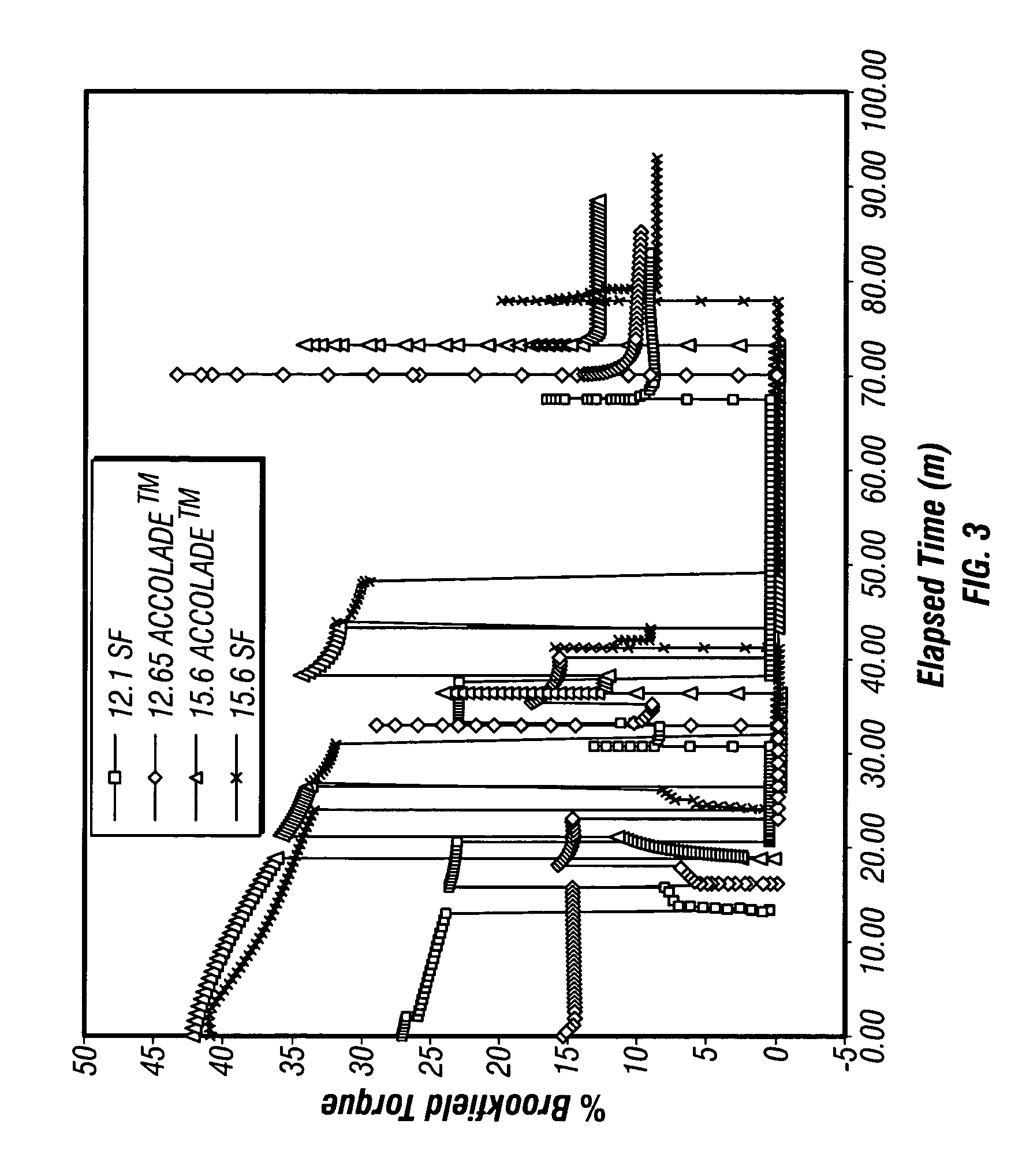Method of formulating and using a drilling mud with fragile gels
a gel and gel technology, applied in the field of compositions and methods for drilling, cementing and casing boreholes, can solve the problem of gels being so fragile, and achieve the effects of less pressure, easy disruption or thinning, and less viscosity
- Summary
- Abstract
- Description
- Claims
- Application Information
AI Technical Summary
Benefits of technology
Problems solved by technology
Method used
Image
Examples
Embodiment Construction
[0027]The present invention has been tested in the field and the field data demonstrates the advantageous performance of the fluid composition of the invention and the method of using it. As illustrated in FIGS. 1(a), (b), (c), and 2, the present invention provides an invert emulsion drilling fluid that may be used in drilling boreholes or wellbores in subterranean formations, and in other drilling operations in such formations (such as in casing and cementing wells), without significant loss of drilling fluid when compared to drilling operations with prior art fluids.
[0028]FIGS. 1(a), (b), and (c) show three graphs comparing the actual fluid loss experienced in drilling 10 wells in the same subterranean formation. In nine of the wells, an isomerized olefin based fluid (in this case, tradename PETROFREE® SF available from Halliburton Energy Services, Inc. in Houston, Tex.), viewed as an industry “standard” for full compliance with current environmental regulations, was used. In one ...
PUM
| Property | Measurement | Unit |
|---|---|---|
| temperatures | aaaaa | aaaaa |
| temperatures | aaaaa | aaaaa |
| temperatures | aaaaa | aaaaa |
Abstract
Description
Claims
Application Information
 Login to View More
Login to View More - R&D
- Intellectual Property
- Life Sciences
- Materials
- Tech Scout
- Unparalleled Data Quality
- Higher Quality Content
- 60% Fewer Hallucinations
Browse by: Latest US Patents, China's latest patents, Technical Efficacy Thesaurus, Application Domain, Technology Topic, Popular Technical Reports.
© 2025 PatSnap. All rights reserved.Legal|Privacy policy|Modern Slavery Act Transparency Statement|Sitemap|About US| Contact US: help@patsnap.com



